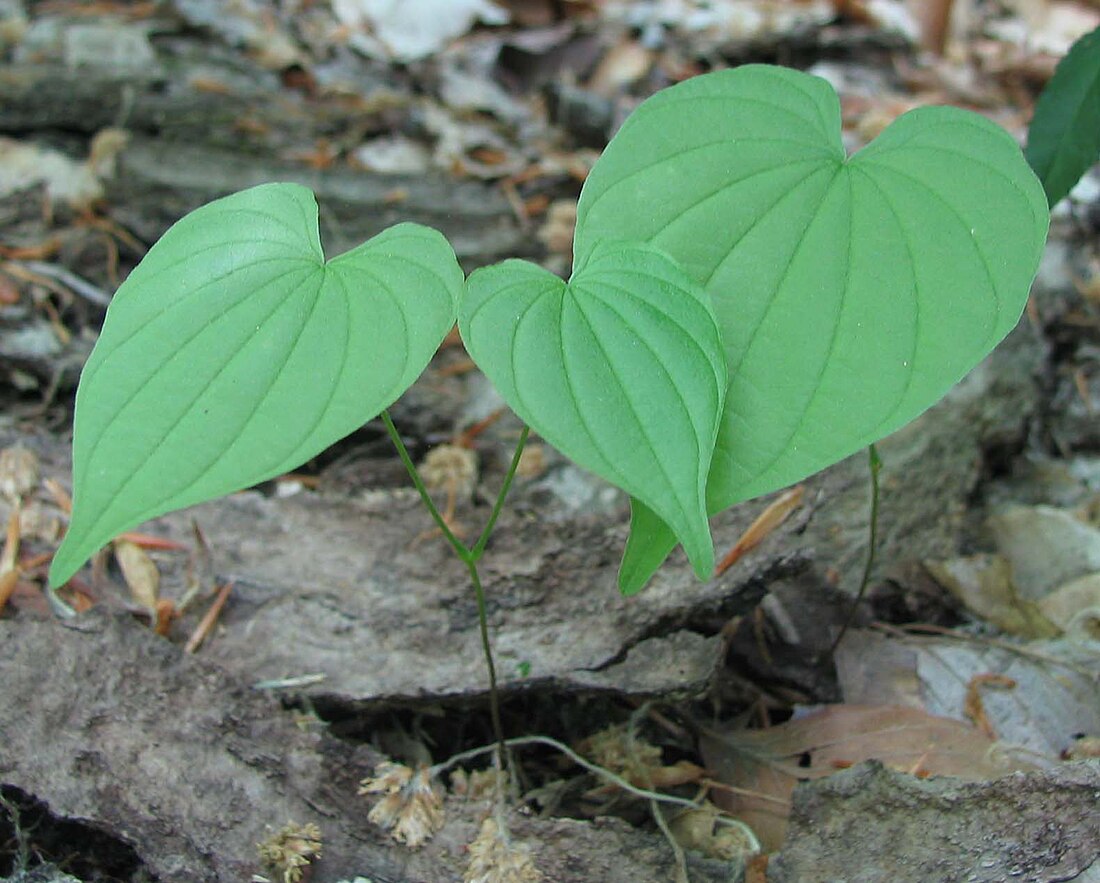Dioscorea villosa
Species of yam from North America From Wikipedia, the free encyclopedia
Dioscorea villosa is a species of twining tuberous vine which is native to eastern North America. It is commonly known as wild yam, colic root, rheumatism root, devil's bones, and fourleaf yam.[4] It is common and widespread in a range stretching from Texas and Florida north to Minnesota, Ontario and Massachusetts.[3][5][6][7][8]
| Dioscorea villosa | |
|---|---|
 | |
| Scientific classification | |
| Kingdom: | Plantae |
| Clade: | Tracheophytes |
| Clade: | Angiosperms |
| Clade: | Monocots |
| Order: | Dioscoreales |
| Family: | Dioscoreaceae |
| Genus: | Dioscorea |
| Species: | D. villosa |
| Binomial name | |
| Dioscorea villosa | |
| Synonyms[3] | |
| |
Description

Dioscorea villosa flower petal color is commonly known to be green to brown, or white. Lengths of the flower petals range from 0.5 to 2 mm (1⁄32 to 3⁄32 in). The flowers tend to grow out of the axil; this is the point at which a branch or leaf attaches to the main stem. There is only one flower present on the inflorescence.[verification needed] The fruit of the plant is a capsule that splits and releases the seeds within to then begin the dispersal process[9] The fruit of Dioscorea villosa ranges in size from 10–30 mm (3⁄8–1+3⁄16 in).[10] The flower does not produce aerial bulblets. THe leaves are heart-shaped, usually a whorl of four at each node, but there can be as many as nine in a whorl.[11]
Taxonomy
Synonyms of Dioscorea villosa include Dioscorea hirticaulis and Dioscorea villosa var. hirticaulis. Common names of Dioscorea villosa include wild yam, Atlantic yam, common wild yam, wild yam-root, yellow yam, colic root, and rheumatism root.[2][12][13]
Chemistry
Dioscorea villosa contains diosgenin, which despite claims is not a phytoestrogen and does not interact with estrogen receptors.[14] Other steroidal saponins are also found in the plant.[citation needed]
Medical use
Some of the English common names of this plant reflect its use in Native American and other traditional medicines.[15] Native Americans in the southeast cultivated this plant.[16] In traditional Russian herbal medicine, saponin extracts from the roots of various varieties of wild yam are thought to be an anticoagulant, antisclerotic, antispasmodic, cholagogue, depurative, diaphoretic, diuretic and a vasodilator.[17]
There is little modern clinical research on Dioscorea villosa, and the one study of a wild yam-containing cream for menopausal symptoms failed to find any value from this therapy.[18] According to the American Cancer Society, there is no evidence to support wild yam or diosgenin being either safe or effective in humans.[19]


References
Further reading
Wikiwand - on
Seamless Wikipedia browsing. On steroids.


